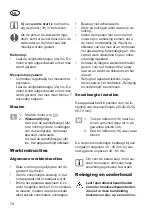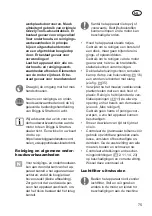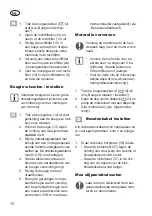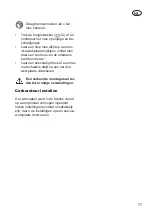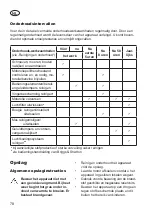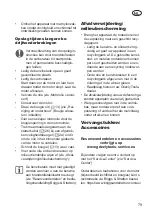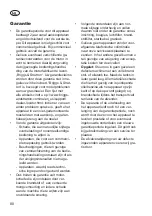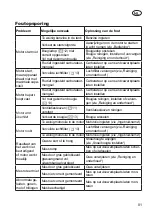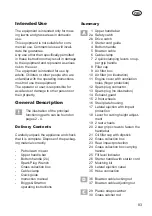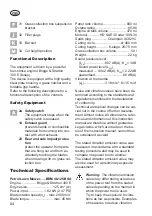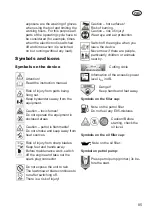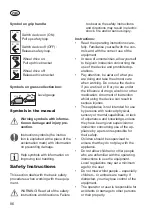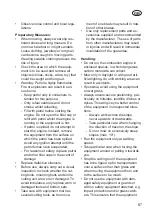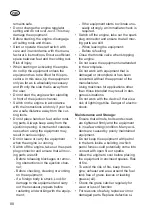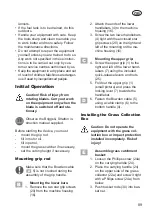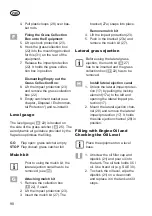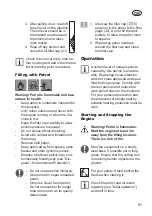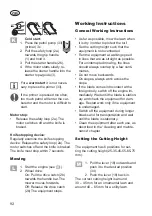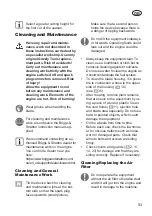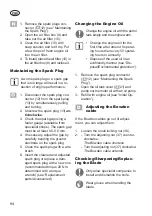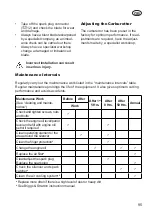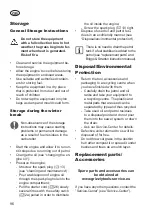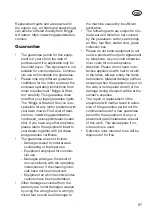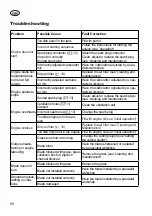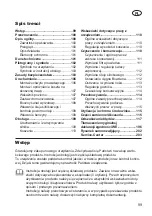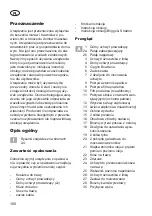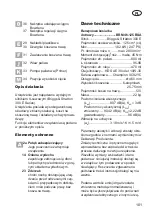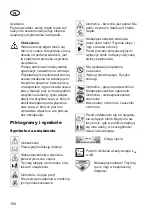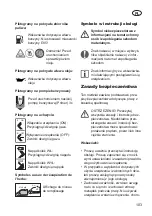
88
GB
remains safe.
• Do not change the engine regulator
setting and do not over-rev it. This may
damage the equipment.
• Before starting, the engine, disengage
all cutting tools and drives.
• Start or operate the start switch with
care and in accordance with the manu-
facturer’s instructions. Ensure sufficient
space between feet and the cutting tool.
Risk of injury.
• When starting or activating the engine,
do not tip the equipment unless the
equipment has to be lifted for this pro-
cedure. In this case, tip the equipment
only as far as is absolutely necessary
and lift only the side that is away from
the user.
• Do not start the engine when standing
in front of the ejection channel.
• Switch on the engine in accordance
with the instructions and only if your feet
are a safe distance away from the cut-
ting tools.
• Do not place hands or feet under rotat-
ing parts. Always keep away from the
ejection opening. A moment of careless-
ness when using the equipment may
result in serious injury.
• Do not leave or carry the equipment
when the engine is running.
• Switch off the engine, take out the spark
plug connector and ensure that all mov-
ing parts are still:
- Before releasing blockages or remov-
ing obstructions in the ejection chan-
nel;
- Before checking, cleaning or working
on the equipment;
- If a foreign body is struck. Look for
damage to the equipment and carry
out the necessary repairs before
restarting and working with the equip-
ment;
- If the equipment starts to vibrate unu-
sually strongly, an immediate check is
required.
• Switch off the engine, take out the spark
plug connector and ensure that all mov-
ing parts are still:
- When leaving the equipment;
- Before refuelling;
• Close the throttle valve when stopping
the engine.
• Do not leave the equipment unattended
in the workplace.
• Do not work with equipment that is
damaged or incomplete or has been
converted without the approval of the
manufacturer.
Using machines for applications other
than those intended may result in dan-
gerous situations.
• Do not work with the device if there is a
risk of lightning strike. Danger of electric
shock.
Maintenance and Storage:
• Ensure that all nuts, bolts and screws
are tightened firmly and the equipment
is in safe working condition. Many acci-
dents are caused by poorly maintained
equipment.
• Do not keep the equipment with petrol
in the tank inside a building in which
petrol fumes could potentially come into
contact with open fire or sparks.
• Allow the engine to cool before placing
the equipment in enclosed spaces. Risk
of fire.
• To avoid the risk of fire, keep the en
-
gine, exhaust and area around the fuel
tank free of grass, leaves or leaking
grease (oil).
• Check the grass catcher regularly for
wear or loss of function.
• For reasons of safety, replace worn or
damaged parts. Replace defective si-

